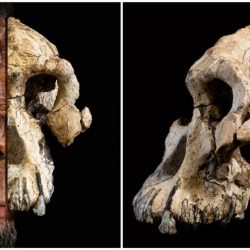What was the name of the dramatic and far reaching change in human life caused by discovery of farming?
The Neolithic Revolution describes the transition from hunting and gathering to farming and then to the onset of agrarian societies. This process, which relied mainly on the domestication of wild plants and animals, occurred independently in at least seven parts of the world from 10,000 BC.
What ancient city was founded on the banks of the Euphrates River?
Babylon: Founded nearly 5,000 years ago on the Euphrates River in present-day Iraq, this ancient metropolis and Biblical city was the last major power in Mesopotamia to fall under Persian control in 539 B.C.
What are cities specialized work government record keeping and advanced technology characteristics of?
Civilization is characterized by five traits: specialized workers, complex institutions, record keeping, advanced technology, and advanced cities.
What is the term of the unique way of life of a group of people?
What is the term for the unique way of life of a group of people? culture.
Can Neolithic be called a revolution?
The Neolithic Age is sometimes called the New Stone Age. Gordon Childe coined the term “Neolithic Revolution” in 1935 to describe the radical and important period of change in which humans began cultivating plants, breeding animals for food and forming permanent settlements.
Why Neolithic Revolution is the most important?
It was the world’s first historically verifiable revolution in agriculture. The Neolithic Revolution greatly narrowed the diversity of foods available, resulting in a downturn in the quality of human nutrition. The Neolithic Revolution involved far more than the adoption of a limited set of food-producing techniques.
Where was the Garden of Eden located?
The Book of Genesis clearly lists four rivers in association with the garden, Pishon, Gihon, Chidekel and Phirat, suggesting its location was in southern Mesopotamia, now known as Iraq.
How did people use the Euphrates River in ancient times?
Along with the Tigris, it provided much of the water that supported the development of ancient Mesopotamian culture. To the southeast the alluvial lands between the two rivers was the site of the glorious Babylonian civilizations of ancient times. The Euphrates is important solely for its water supply.
What are the 5 characteristics of an advanced civilization?
A civilization is often defined as a complex culture with five characteristics: (1) advanced cities, (2) specialized workers, (3) complex institutions, (4) record keeping, and (5) advanced technology.
What are 5 examples of culture?
What are 10 examples of culture?
- Norms. Norms are informal, unwritten rules that govern social behaviors.
- Languages.
- Festivals.
- Rituals & Ceremony.
- Holidays.
- Pastimes.
- Food.
- Architecture.
What makes culture meaningful to human beings?
Culture is our way of life. Through our culture we develop a sense of belonging, personal and cognitive growth and the ability to empathize and relate to each other. Direct benefits of a strong and vibrant culture include health and wellness, self esteem, skills development, social capital and economic return.
Why is Neolithic age important?
The Neolithic period is significant for its megalithic architecture, the spread of agricultural practices, and the use of polished stone tools.
What is the Garden of Eden called today?
The physical place of the Garden of Eden The Tigris and Euphrates are two well-known rivers that still flow through Iraq today. In the bible, they are said to have flowed through Assyria, namely today’s Iraq. So, having some boundaries, it means that the Garden of Eden is somewhere in Mesopotamia.
What language did Adam and Eve speak?
Adamic language
The Adamic language, according to Jewish tradition (as recorded in the midrashim) and some Christians, is the language spoken by Adam (and possibly Eve) in the Garden of Eden.
What are the 5 stages of a civilization?
Terms in this set (5)
- hunting and food gathering or nomads.
- food production or domesticating animals.
- surplus or having more than you need.
- division of labor or people get different jobs other than farming.
- the rise of cities.
What are the 9 characteristics of a civilization?
Terms in this set (9)
- Agriculture. provides a steady and reliable source of food for a large group of people.
- Government. provides organization and leadership for a large group of people.
- Law.
- Religion.
- Education.
- Economic System.
- Science/Technology.
- The arts.
What is the main result of the domestication of animals?
The main result of the domestication of animals was that humans were able to get food as a result. By domesticating farm animals like sheep, cattle, cows, and chickens, people were able to get fresh meat from them. Also, humans were also able to get the dairy of cows, sheep, and cattle.
Who was the economist who predicted widespread famine?
As early as 1798, the English economist Thomas Robert Malthus (1766–1834) wrote an essay, “The Principles of Population,” predicting widespread famine on the grounds that while population seemed to be proceeding at a geometrical rate (2, 4, 8, 16), food production was only growing at an arithmetical rate (2, 4, 6, 8).
How did the Industrial Revolution affect rural people?
The dramatic rise in the number of factories provided jobs for some of these former farmers. These workers were relatively unskilled (compared to master craftspeople), but they could be trained to operate the new machinery being introduced. The flow of rural people into cities overwhelmed the physical facilities.
What are the problems of agricultural workers in the world?
Millions of agricultural workers – waged and self-employed – while feeding the world, regularly face high levels of working poverty, malnutrition and poor health, and suffer from a lack of safety and labour protection as well as other types of abuse.
What did Michael Faraday say about the River Thames?
As late as 1855, a leading English scientist, Michael Faraday (1791–1867), wrote a letter to the editor of the Times of London describing a boat ride on the River Thames, which runs through London: The appearance and the smell of the water forced themselves at once on my attention. The whole of the river was an opaque pale brown fluid.…
Where did the invention of Agriculture take place?
Leonid Grinin argues that whatever plants were cultivated, the independent invention of agriculture always took place in special natural environments (e.g., South-East Asia). It is supposed that the cultivation of cereals started somewhere in the Near East: in the hills of Palestine or Egypt.
Where did agriculture begin in the Neolithic Revolution?
The Hilly Flanks hypothesis, proposed by Robert Braidwood in 1948, suggests that agriculture began in the hilly flanks of the Taurus and Zagros mountains, where the climate was not drier as Childe had believed, and fertile land supported a variety of plants and animals amenable to domestication.
When was the beginning of the Agricultural Revolution?
So Grinin dates the beginning of the agricultural revolution within the interval 12,000 to 9,000 BP, though in some cases the first cultivated plants or domesticated animals’ bones are even of a more ancient age of 14–15 thousand years ago.
How did Frank Hole reassess the Neolithic Revolution?
In “A Reassessment of the Neolithic Revolution”, Frank Hole further expanded the relationship between plant and animal domestication. He suggested the events could have occurred independently over different periods of time, in as yet unexplored locations.






